Introduction
Diabetes is often apprehensive because of the notion of ‘giving up all favourite foods’. But if we told you that it’s all a myth and you can enjoy all your favourite foods with a healthy routine, daily food choices and meal planning, that’s amazing, right?
To supplement the body’s requirements, a diabetic patient should exercise regularly, take medications on time and have a balanced diet. Following a type 2 diabetes diet plan which is nutrient-dense, low in fat and calories in moderate amounts, and sticking to a regular mealtime will help to regulate the blood sugar level.
Read on to understand what diabetes is and all about diabetics’ diets.
What is Type 2 Diabetes?
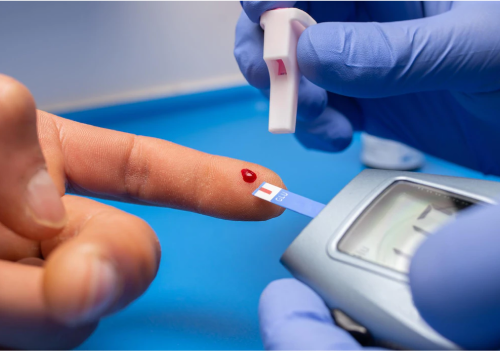
Insulin is a hormone produced by the pancreas that helps regulate glucose absorption into cells for energy. Type -2 Diabetes is a chronic medical condition in which the levels of sugar/ glucose build up in the bloodstream, and the body cannot react to insulin effectively (insulin resistance) or is unable to produce enough of it (insulin insufficiency).
It typically develops in adulthood but can also hit children and teens.
Globally, an estimated 462 million individuals are affected by type 2 diabetes, corresponding to 6.28% of the world’s population.
The risk factors for type-2 diabetes are attributed to:
- Excess body weight, especially around the abdomen, increases the risk of developing insulin resistance.
- Lack of physical activity or a sedentary lifestyle.
- High consumption of processed foods, sugar and unhealthy fats.
- Family history of diabetes.
- Increasing age etc.
The symptoms of type 2 diabetes may include:
- Frequent urination
- Increased thirst
- Increased hunger but unexplained weight loss
- Fatigue
- Blurred vision
- Slow-healing wounds or frequent infections
- Tingling or numbness in the hands or feet
Facts you should know about the type 2 diabetes diet
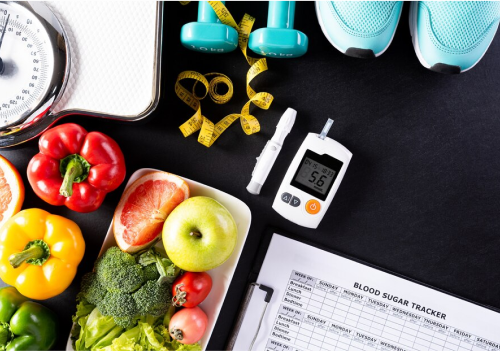
The global prevalence of type 2 diabetes is projected to increase to 7079 individuals per 100,000 by 2030, reflecting a continued rise across all regions of the world. It points out the necessity of the type 2 diabetes diet in place.
- A diabetic diet is a nutritionally balanced meal plan, rich in carbohydrates, proteins, healthy fats, fruits, vegetables and whole grains that allows the optimum blood sugar level maintenance, supports healthy weight management and reduces fatigue from sudden sugar dips.
- Portion control is a vital part of the diet, as overeating can cause sugar spikes and dips, leading to fatigue.
- Including high-fibre foods regulate blood sugar levels, improve digestion and provide a feeling of fullness.
- Choosing healthy carbohydrates is essential as, during digestion, sugars(simple carbohydrates) and starches(complex carbohydrates) break down into blood glucose. Therefore choose healthy carbohydrates such as fruits, vegetables, whole grains, legumes, and low-fat dairy products.
- Healthy fats like avocados, nuts, seeds and olive oil are included in the diet to help with heart health.
- Regular mealtimes are a crucial part of managing blood sugar levels.
The American Diabetes Association (ADA) emphasises that medical nutrition therapy (MNT) is fundamental in the overall diabetes management
plan and the need for MNT should be reassessed frequently by health care providers in collaboration with people with diabetes across the lifespan, with attention during changing health status and life stages.
Regular sugar monitoring and consulting a registered dietician or healthcare practitioner is also essential apart from following the diabetes diet. Try to figure out a sustainable diabetes diet plan which helps to lose weight, reduce the risk of heart and kidney diseases etc.
How Can Diet Help You Manage Type 2 Diabetes?
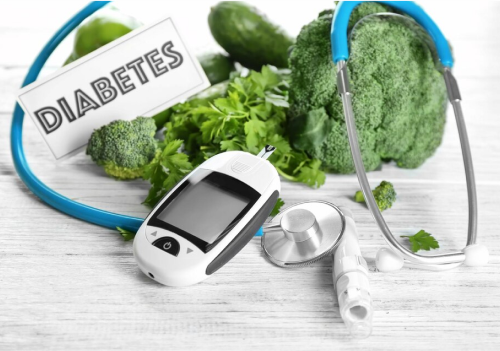
Eating a balanced and nourishing diet benefits everyone, and in diabetic persons, it is crucial as it:
- Reduce blood sugar levels, lowers diabetes symptoms and other health risks associated. The diet would incorporate complex carbohydrates with a low glycemic index (GI), such as whole grains, legumes, and non-starchy vegetables, that can prevent rapid spikes in blood sugar after meals.
- Healthier weight achievement by including nutrient-dense foods and calorie moderation would improve insulin sensitivity and glycemic control.
- The diet plan will provide the body with essential vitamins, minerals, antioxidants and phytochemicals that support the immune system, enhance energy levels and promote overall health.
- The diabetic diet plan will contain fibre-rich foods that promote portion control and satiety.
What Is a Good Diet for Type 2 Diabetes?
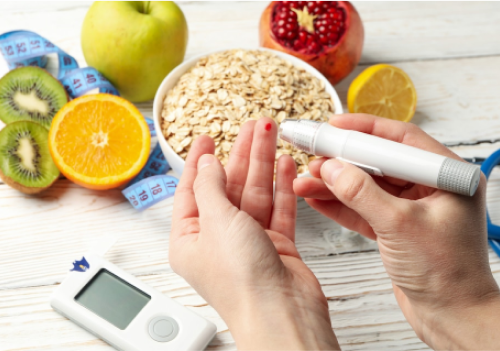
Although there is no typical “diabetic diet”, this diet includes choices of foods crucial in alleviating sugar fluctuations in the body. The best diet for type 2 diabetes should include the following:
- Complex carbohydrates with a low glycemic index (GI), like whole grains, legumes, non-starchy vegetables and fruits in regulated amounts.
- Fibre-rich foods like whole grains, fruits, vegetables, legumes, nuts, and seeds regulate blood sugar levels, promote satiety and support digestive health.
- Lean proteins like skinless poultry, fish, lean cuts of meat, eggs, tofu, and low-fat dairy products, benefit muscle repair too.
- Healthy fats like avocados, nuts, seeds, olive oil and fatty fish benefit heart health and provide satiety.
The diet should also be accompanied by regular meal timing, portion control, limiting sugary foods & drinks, high-sodium foods, such as processed meats, canned soups and salty snacks and drinking plenty of water throughout the day.
Foods to eat with type 2 diabetes
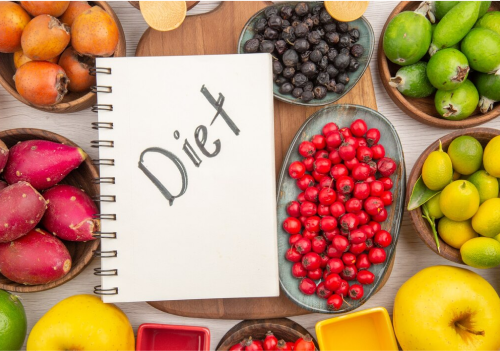
Below is the list of food for a type 2 diabetes diet plan:
Healthy carbohydrates:
- Fruits- avacado , berries and guava
- Vegetables- broccoli, cauliflower, spinach, cucumbers, zucchini
- Whole grains- quinoa, oats, brown rice, farro
- Legumes- beans, lentils, chickpeas
- Low-fat dairy products- milk and cheese
Fibre-rich foods:
Consuming at least 25 to 35 grams of dietary fibre in a day is essential for good health because fibre helps slow down the absorption of all sugars in your bloodstream.
- Vegetables
- Fruits(avacado , berries and guava)
- Nuts- almonds, walnuts, pistachios, macadamia nuts, cashews
- Legumes
- Whole grains
Good fats:
Foods that contain monounsaturated and polyunsaturated fats can help lower cholesterol levels:
- Avocados
- Nuts
- Canola, olive, sesame and peanut oils
- Omega-3-fatty acids rich salmon, mackerel, tuna and sardines
PROTEIN-RICH FOODS:
- Skinless poultry
- Seafood
- Lean cuts of red meat
- Tofu
- Tempeh
Seeds
Seeds rich in omega-3 fatty acids, fibre or other vitamins and minerals can be included in moderate amounts, typically a tablespoon or two.
- Chia seeds
- Pumpkin seeds
- Flax seeds
- Hemp seeds
- Sunflower seeds
Considering all these beneficial foods, here are some meal ideas curated for you:
- Breakfast ideas when you have diabetes:
Option 1- 1 cup cooked steel-cut oatmeal with any fruit of choice(included in the list), two scrambled eggs and veggies sautéed in olive oil.
Option 2- Ragi uthappam with grated vegetables, flax seed powder and ghee(ghee has a low glycemic index) as toppings, served with coconut chutney or sambhar.
- Lunch ideas when you have diabetes:
Option 1- 1 cup brown rice, 1 cup spinach, sauteed in olive oil with minced garlic and chopped onion, fish, preferably tuna or sardine, curried or baked.
Option 2- Any roti- (Jowar Roti, Oats Roti, Ragi Roti, Bajra Roti, Moong Dal Roti or Green Peas Roti), dal (Chana Dal, Urad Dal, Moong Dal, Masoor Dal, Palak Dal, Rajma and Chickpeas), curry (Bhindi, Bitter Gourd, Bottle Gourd, Brinjal, Palak, Beans, Broccoli, Methi, Mushroom, Capsicum, Peas, Carrot, Lettuce, Cauliflower, Zucchini etc.) and a vegetable salad/ raita.
- Dinner ideas when you have diabetes:
Option 1- ½ cup multigrain pasta with zucchini, mushrooms tossed with olive oil and roasted chicken.
Option 2- Roti with chicken curry and veggie salad.
Foods to avoid with type 2 diabetes
Certain foods are high in trans fat, saturated fats, cholesterol and sodium and to be given a miss.
Foods to avoid with type 2 diabetes include:
- High-fat meat (fatty cuts of pork, beef, lamb, poultry with skin)
- Full-fat dairy (whole milk, butter, cheese, sour cream)
- Sweets (candy, cookies, bakery items, ice cream, desserts)
- Sweetened beverages (juice, soda, sweet tea, sports drinks)
- Sweeteners (sugar, brown sugar, honey, maple syrup, molasses)
- Processed foods (chips, microwave popcorn, processed meat)
- Fried foods
In the fast-paced world, lifestyle diseases are common and managing them requires a lot of dedication and discipline. You can get the right mentors at Satva wellness clinic.
Satva Wellness Clinic focuses on the root problem and helps you restore your health through nutritional changes, intermittent fasting, lifestyle changes, meditation, and other natural methods. Experienced nutritionists and wellness experts provide a holistic and personalised treatment that caters to your body’s requirements.
Conclusion
The pillars of a successful diabetes management plan are- a healthy diet, stress management, regular exercise and strict adherence to prescribed medications.
Also, consult a healthcare professional for proper diagnosis and management. Treatment options may include lifestyle changes such as adopting a healthy diet, increasing physical activity, and losing weight.
The diabetic diet should include nutrient-rich foods and portion management should be strictly adhered to. Doing these will let you enjoy your favourite meals without compromising on taste.
 +91 9164688217
+91 9164688217 080-8035875605
080-8035875605
 Time 7.30 am to 9 pm (Monday to Saturday)
Time 7.30 am to 9 pm (Monday to Saturday) Time 8 am to 1 pm (Sunday)
Time 8 am to 1 pm (Sunday) Satva speciality clinic and preventive health centre: RBI Layout, Kothanooru Main Road, J.P. Nagar, 7th Phase Bangalore 560078
Satva speciality clinic and preventive health centre: RBI Layout, Kothanooru Main Road, J.P. Nagar, 7th Phase Bangalore 560078





Leave a Reply